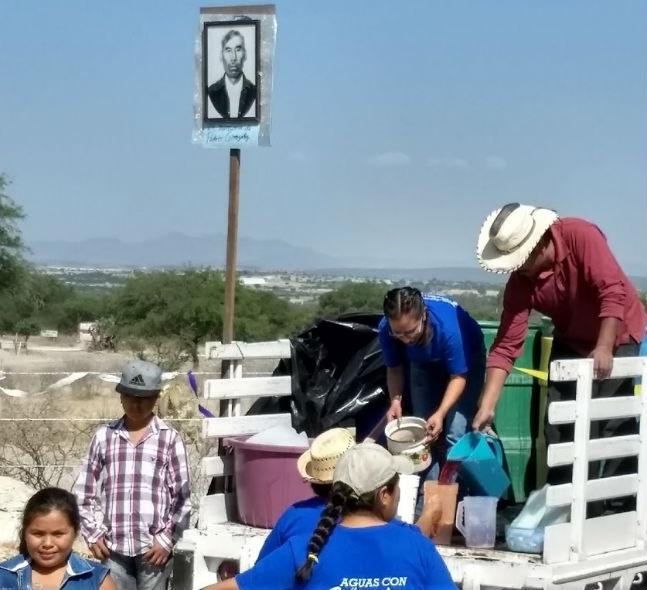
by Joseph Toone
For years, Easter, to me, was hiding eggs in the pre-dawn hours in the maritime forest of our small, Carolina island home. Then I’d pen a poem from the Easter bunny explaining which color eggs were for which of my three kids. (Two of the children were color-blind. These needed egg colors they could actually see.) Easter was a light, fluffy introduction to summer. My, how things have changed.
This Easter I met a pal out by the railroad station. The station features an artists’ market every Sunday. Luckily for me and mine I had bought some fans for my Danzon students which instead I was able to give away to elderly women approaching heat stroke later in the day, that is, after I ran out of parasols.
From the railroad station Ernesto and I rode the rails. I mean walked. "Rode" implies a hobo lifestyle filled with fun and frolic, as featured in a Charlie Chaplin movie. Following our rails, which were simply hot and dusty, we approached a cross for the image of Miraculous Jesus of Good Health.
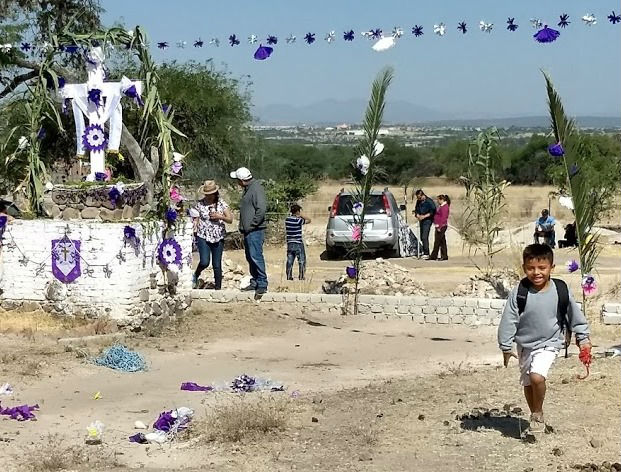
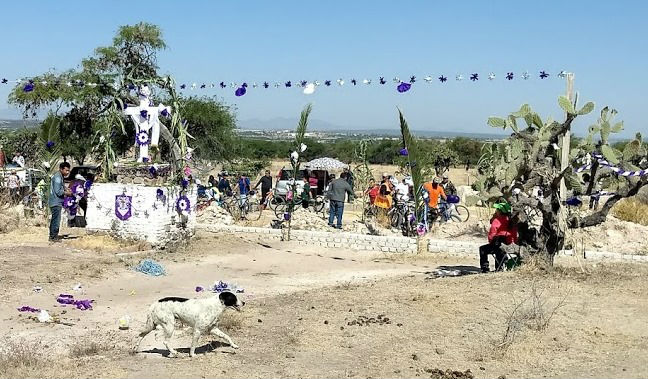
Miraculous Jesus of Good Health is an image of Jesus on the cross known for his (wait for it) miracles with good health. His namesake church is in Ciengieta and his special day is every Easter. Just off the road to the Leon airport by San Miguel Viego and the railroad is a cross decorated to be a meeting point for Easter pilgrims on their way to his namesake church.
First to arrive was Fr. Tony and his fellow bike riders.
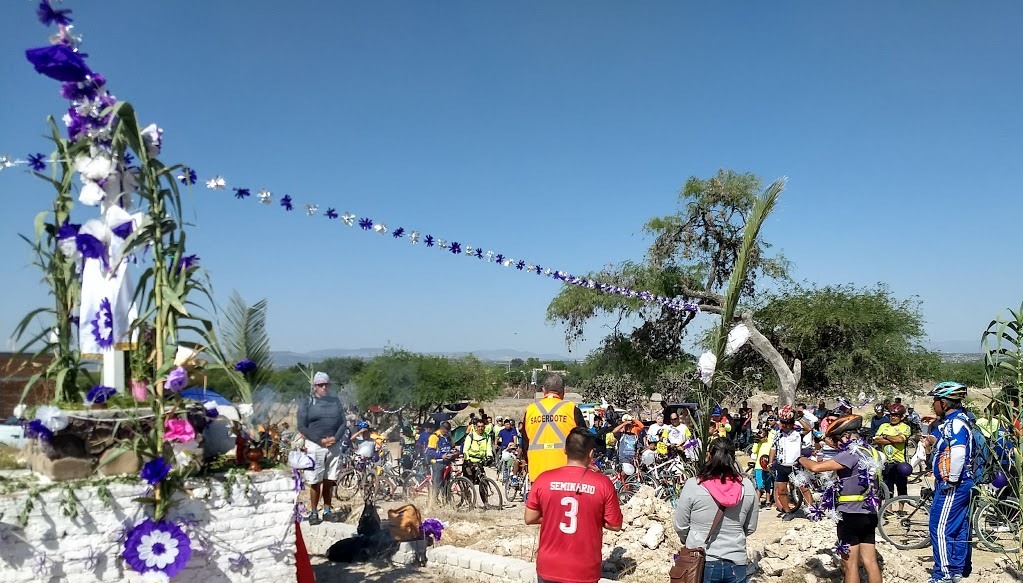
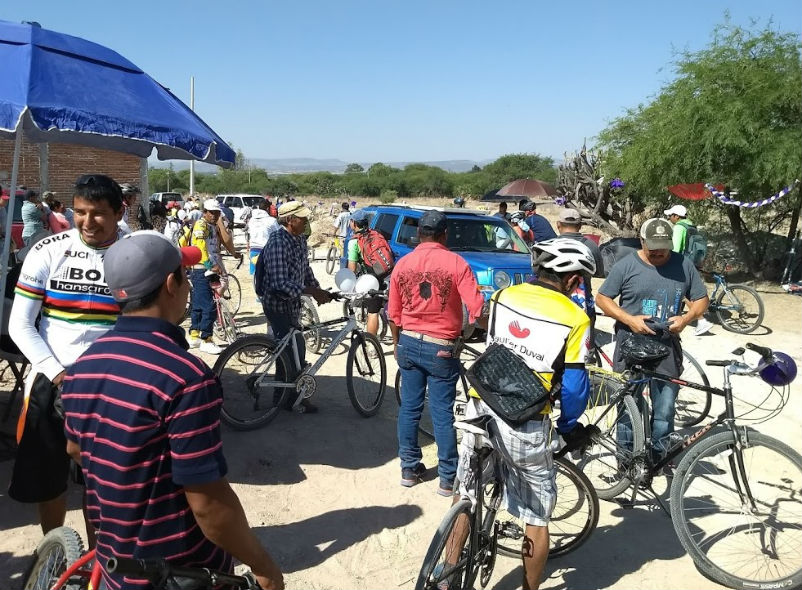
Pictured is Fr. Tony with the vest stating “Priest”. In case you even considered running him down in your car you should know in advance that you will be condemning yourself to both prison and hell. The smoke in the image is copal, used to invite ancestors back to the celebration.
I was stunned any priest could fit in biker pants. As a kid all priests and nuns were portly, long before being fat become standard in the States. I recall my sisters asking what sins priests and nuns committed requiring weekly confession and, without missing a beat ,my father replied, “Gluttony”.
Not Fr. Tony! He and his fit pals had a service, blessing and after enjoying free water and food, continued on their journey to Ciengieta. The pilgrims from Santa Julia I passed on my way to the railroad station earlier arrived.
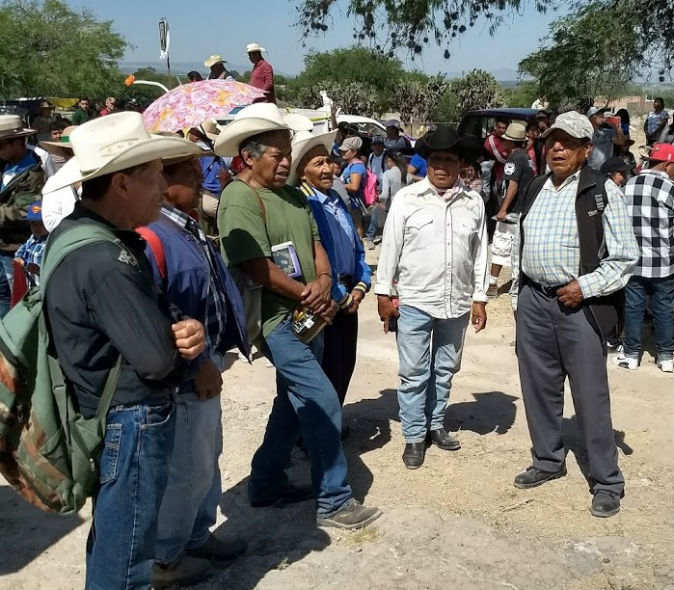
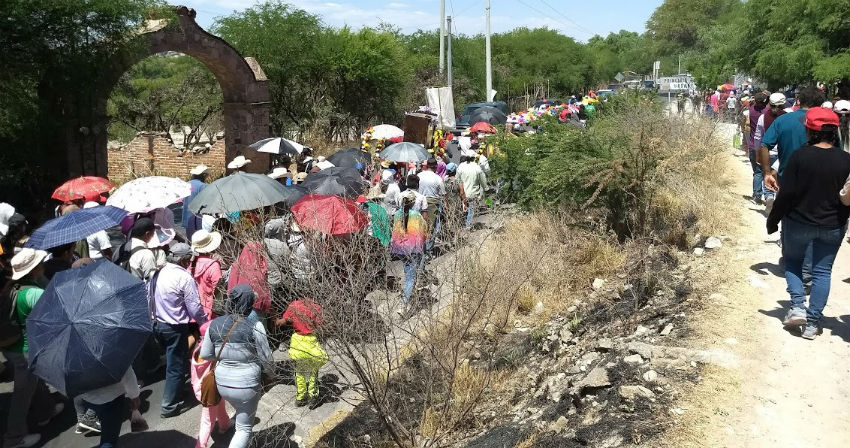
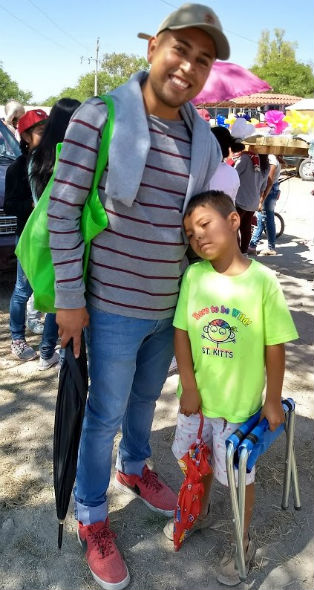
Here small groups of men sang ancient Easter songs of death and rebirth, received blessings, then food, before continuing on to Ciengieta. At one point I carried St. Mike as he met the approaching pilgrims and their image of Jesus on the cross. Blessings were exchanged to the four corners of the wind in an ancient indigenous practice, while my eyes narrowed in on a vendor selling umbrellas.
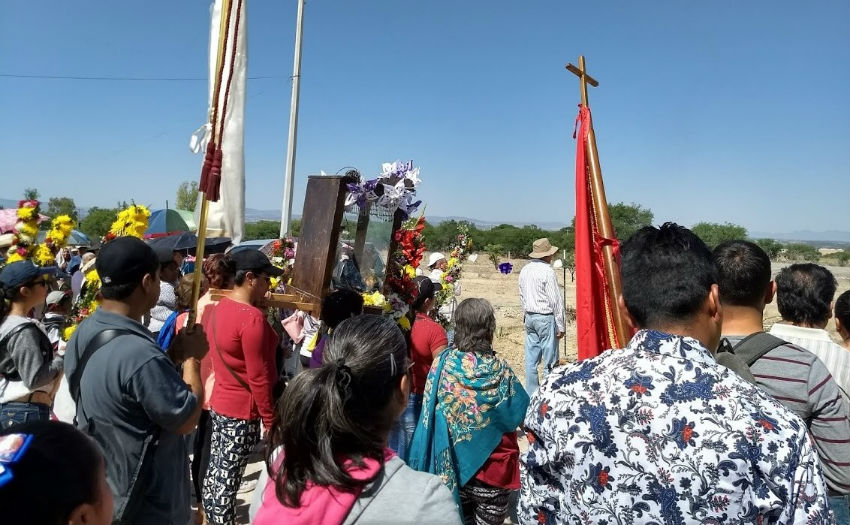
Having had no idea an hour long pilgrimage was where Easter morning was leading, and as I was still suffering sunburn on my shoulders (acquired through my shirt, curse that super-sensitive Irish skin) from Good Friday’s procession, I was stoked to find umbrellas for sale. I bought all I could afford and was eternally grateful.
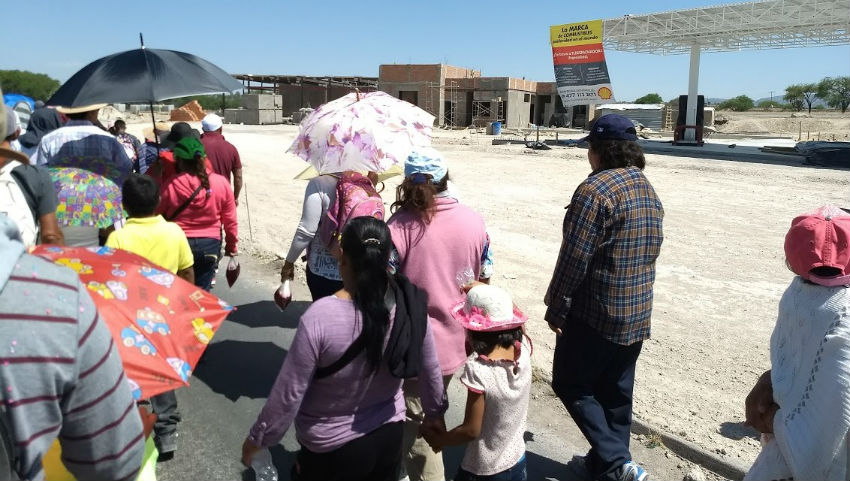
After passing where the new gas station is being built we headed up the highway to Ciengieta, which was surprisingly farther away on foot than by car. Plus, in a car you don’t notice what my Amish neighbors growing up called “road apples” left by pilgrims on horses. These endlessly fascinated my six year old companion. “Why so many?” “What do they eat to pooh so much?” I could only appease him by explaining that work for horses wasn’t carrying cowboys, or trotting. Rather God made horses to pooh which fed the plants and these horses were very hard workers.
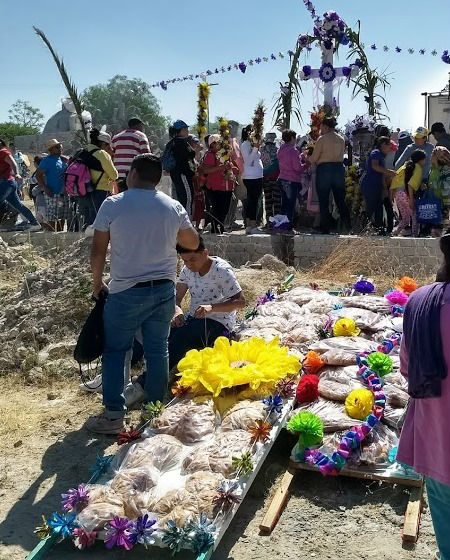
Along with the statues, horses, dancers and music were the parandes. Parandes are offerings shaped like long ladders made from cactus and laced with large loafs of bread. Whatever family later took a parande home was responsible for proving another in next year’s procession. Like praying to the four winds, many of the loafs featured four petal flowers symbolizing the circular nature of both life and faith.
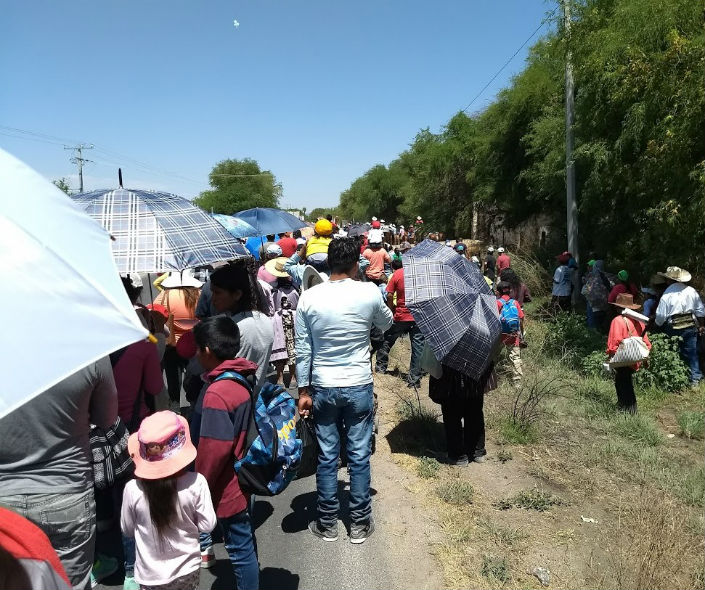
I was told that the ever-present fireworks were designed to help to keep the crowd tranquil and focused. Frankly they only made me jittery and scatter-brained, but as the only foreigner around I probably wasn’t the target audience.
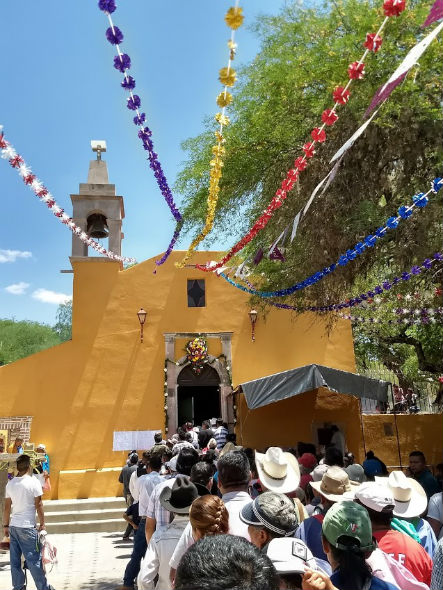
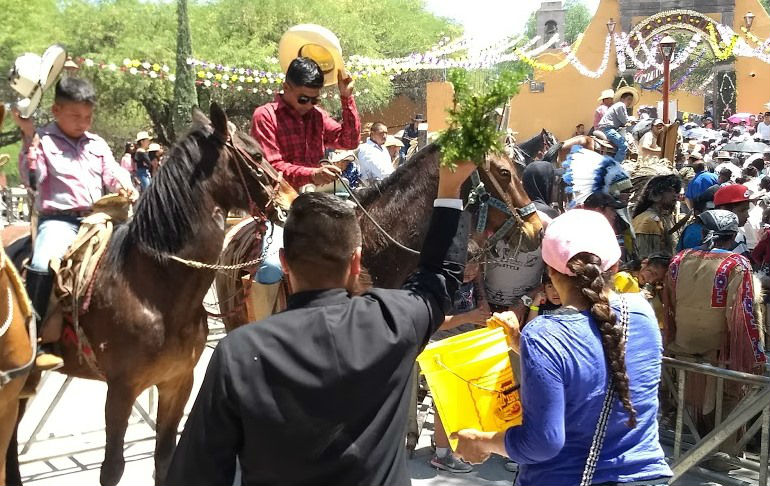
Finally we reached the Church of Ciengieta. IT was lined with horses and Chichimecas, the indigenous hunter gathering tribe when the Spaniards arrived. Despite my towering over Chichimeca men, they still sort of terrify me with their animal pelts and headgear featuring skulls and wicked cool make up. Today they were all smiles, each being somehow related to my pal, Ernesto.
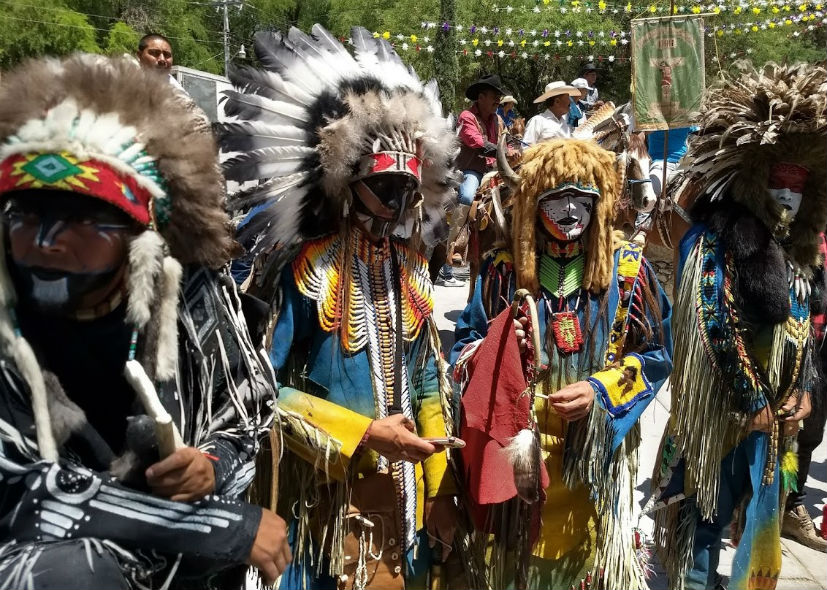
We then crossed the highway to eat at the restaurant, started a year ago by the gal that use to clean for me to fulfill her dream of owning a restaurant. She’s a great cook and I always enjoy spending time talking with her about food and her family.
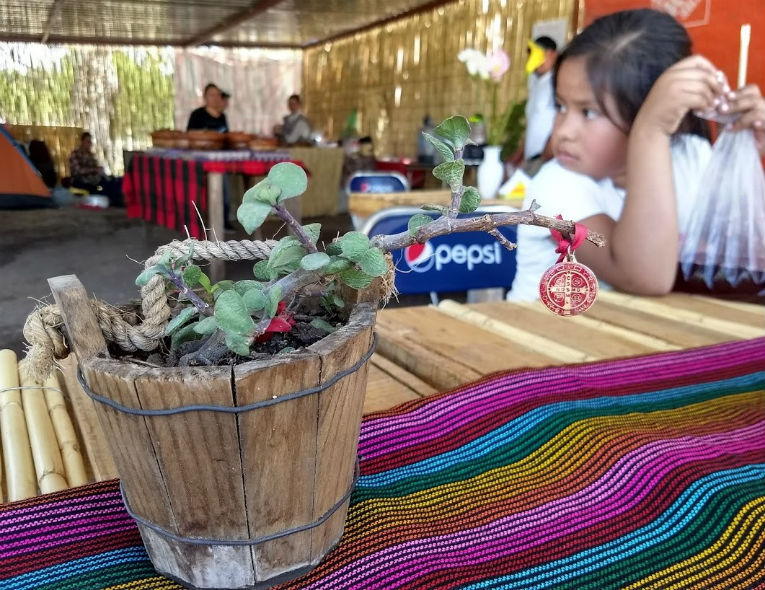
I was pleased to see that the plants on her tables featured the St. Benedict medals that I had given her to keep away evil. However, I surmised upon seeing the pup-tent she slept in at night to prevent folks from stealing her stove that the medals weren’t really living up to their potential.
I lucked out, hitching a ride back into town. I was ever so glad to get back into my shady home with my dog, who longed for a long walk. But that simply wasn’t going to happen.
**************

Joseph Toone is Amazon's bestselling author of the San Miguel de Allende Secrets series of books and TripAdvisor's best rated historical walking tour guide. For more information contact toone.joseph@yahoo.com or visit History and Culture Walking Tours or JosephTooneTours.com, also on FaceBook.
You must register and log in to write a comment.
Please use the "login" link at the top (right) of the page.
|